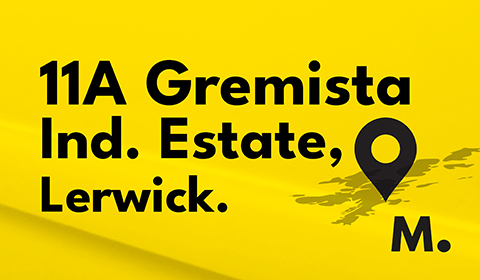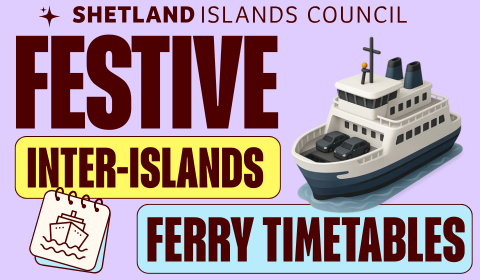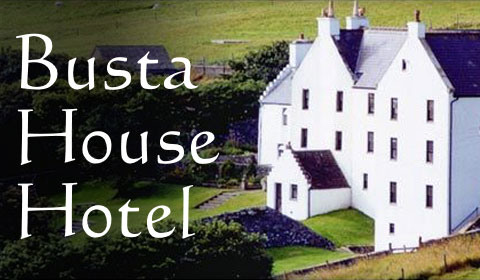Letters / Norway never gave away Shetland
They say Norway gave Shetland away. That’s the story we’ve been fed for generations — but it’s not just wrong, it’s a historical lie. The truth is written in black and white, buried in legal documents that Scotland hoped we’d forget — and it tells a very different story.
In 1468 and 1469, the islands of Orkney and Shetland were pawned by King Christian I of Denmark-Norway to King James III of Scotland, as a temporary guarantee for a dowry payment. This was a pledge — not a sale, not a gift, not a handover. The original charters (dated 28 May 1469, from Havn/Copenhagen) explicitly state that the islands were pledged “under assured security” and were to remain under Scottish control until the dowry was repaid — nothing more.
“We have granted, pledged and mortgaged, and under assured security and pledge do grant, mortgage and pledge all and sundry our lands of the islands of Shetland…” (Christian I’s Pawning Documents, Shetland Museum)
But what’s often missed is this: Christian I wasn’t pawning the Shetlanders’ land at all — nor even his own, for under Norwegian law no monarch could give away the realm’s lands. What he pawned were the royal rights tied to the islands — the revenues, taxes, and authority. Yet, through that act, Scotland seized control as if Shetland itself had been sold — something forbidden by Norwegian law and far beyond the Crown’s power.
And there’s an even deeper problem — one that destroys the entire myth at its root.
How could Norway have given us away when Norway wasn’t even consulted? At the time, Denmark and Norway were united under Christian I, but Shetland was a dependency of the Kingdom of Norway — not Denmark. The 1450 Treaty of Bergen confirmed Norway’s status as a self-governing realm within the union, ruled by its own laws and council.
Under Norwegian constitutional law, set out in the 1449–50 electoral charter, the king was constitutionally bound to seek the consent of the Council of the Realm before taking any action affecting Norway’s territories. That consent was never given. The pawning went ahead without Norway’s approval — a clear breach of its constitution, and entirely illegitimate under the laws in force at the time.
Christian I never relinquished Norway’s sovereign right to reclaim the islands. His successors attempted to redeem the dowry pledge multiple times — in 1549, 1550, 1558, 1585, 1589, 1640 and 1660 — but each time the Scots effectively refused redemption. Not only that, they refused to even negotiate. Scotland’s takeover wasn’t legal. It was deliberate, opportunistic and exploitative.
And it wasn’t just Denmark–Norway that understood this. Scotland knew it too. In 1514, the Duke of Albany, acting as Regent of Scotland, offered to return both Shetland and Orkney to Denmark in exchange for military support. A decade later, in 1524, Scotland’s government — during James V’s minority — proposed returning Orkney for financial aid. These were not symbolic gestures but serious political negotiations, and they prove something devastating to the Scottish claim: even Scotland itself acknowledged that its possession of the isles was conditional — and could be undone.
And who suffered the consequences? We did. The Shetlanders.
Under Norse rule, we had Udal law — a fair and ancient legal system built on allodial land rights. We had Norse customs, Norse names, and our own Norse language — Norn. It should never have been dismantled. But under Scottish rule, that’s exactly what happened. What followed wasn’t assimilation — it was Scottification and colonisation.
Our Udal law was stripped from us.
Our native tongue, Norn, was systematically eradicated and mocked — ridiculed in public, excluded from schools, and buried so deep that many Shetlanders have never even heard of it. Does that not tell you something?Our Norse naming traditions were wiped out. Parents weren’t allowed to give their children Norse or so-called heathen names, the patronymic system was stamped out, and surnames were changed to fit Scottish norms — erasing centuries of heritage in the process.
The Scots didn’t honour the conditions of the agreement. They abolished our laws, replaced our language, and erased our culture.
“The islands continued to follow Norse Law and were connected to the Law Book of Magnus the Lawmender until 1611 when an act of parliament abolished its use and ordered the islands to follow Scottish law.“ (“The Norse influence on Shetland culture” on Shetland.org)
The claim that Shetland is rightfully Scottish doesn’t just fall apart — it shatters. There is no treaty of cession, no formal agreement extinguishing Norway’s rights, and no legal justification for the annexation of Shetland in 1472. The original documents still exist. The facts are still visible. We were not given away. We were taken.
And the consequences didn’t stop in the past. The illegitimate way Shetland was absorbed into Scotland — without consent, without a treaty, and without legal resolution — laid the foundation for what we still face today. Shetlanders are politically voiceless in decisions about our own islands. The past defines the present. The erosion of our sovereignty began in 1469 — but its impact reaches into every corner of our lives today.
Perhaps our future lies in our past?
Shetlanders deserve to know the truth — for ourselves, for those who lost everything, and for those who’ll come after us.
They deserve to grow up knowing our real history — not lies that suit Scotland’s weak claim to our isles.
Magnus Hutchison
Whalsay
Note: Parts of this letter were amended on 7 November 2025.
Sources:
- Charter of Christian I, 1469, in Saga-Book of the Viking Society, Vol. 17 (1907–08), pp. 175–176
- Smith, Brian. The Shetland Documents 1195–1579, Shetland Archives
- Donaldson, Gordon. The Scottish Historical Review, Vol. 42 (1963)
- Thomson, William P. L. The New History of Orkney (2001)
- Marwick, Hugh. The Orkney Norn (1929)
- Goudie, Gilbert. The Celtic and Scandinavian Antiquities of Shetland (1904)
- Shetland Museum & Archives Blog: “550 Years Ago: How Shetland Became Part of Scotland”
- National Archives of Norway: Letters of King Christian II
- Krag, Claus. Norsk Historie 800–1300 (Aschehoug, 2000)
- Helle, Knut. The Cambridge History of Scandinavia, Vol. 1 (2003)
- Seenan, Gerard. “The pawn status of the islands is still valid”, The Guardian, 20 February 2002 https://www.theguardian.com/uk/2002/feb/20/gerardseenan
- “The Norse influence on Shetland culture” on Shetland.org






























































